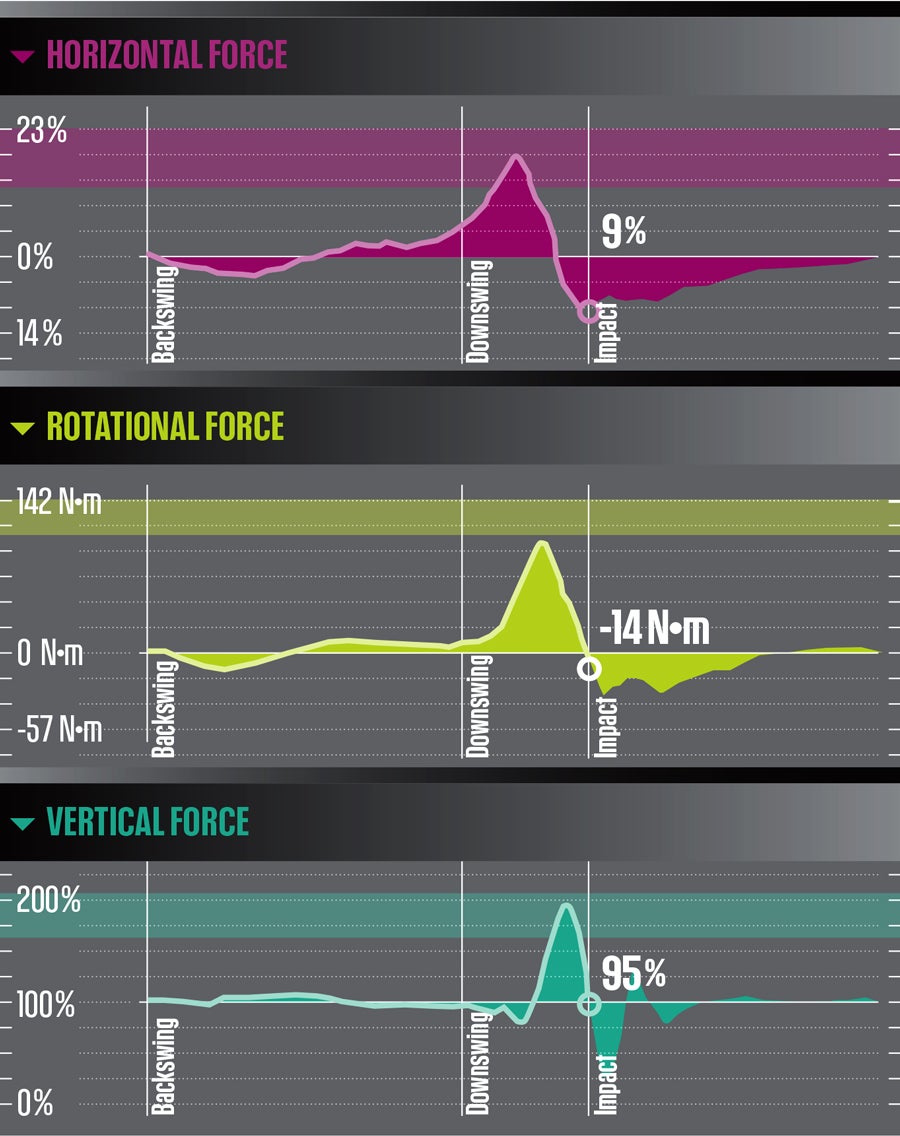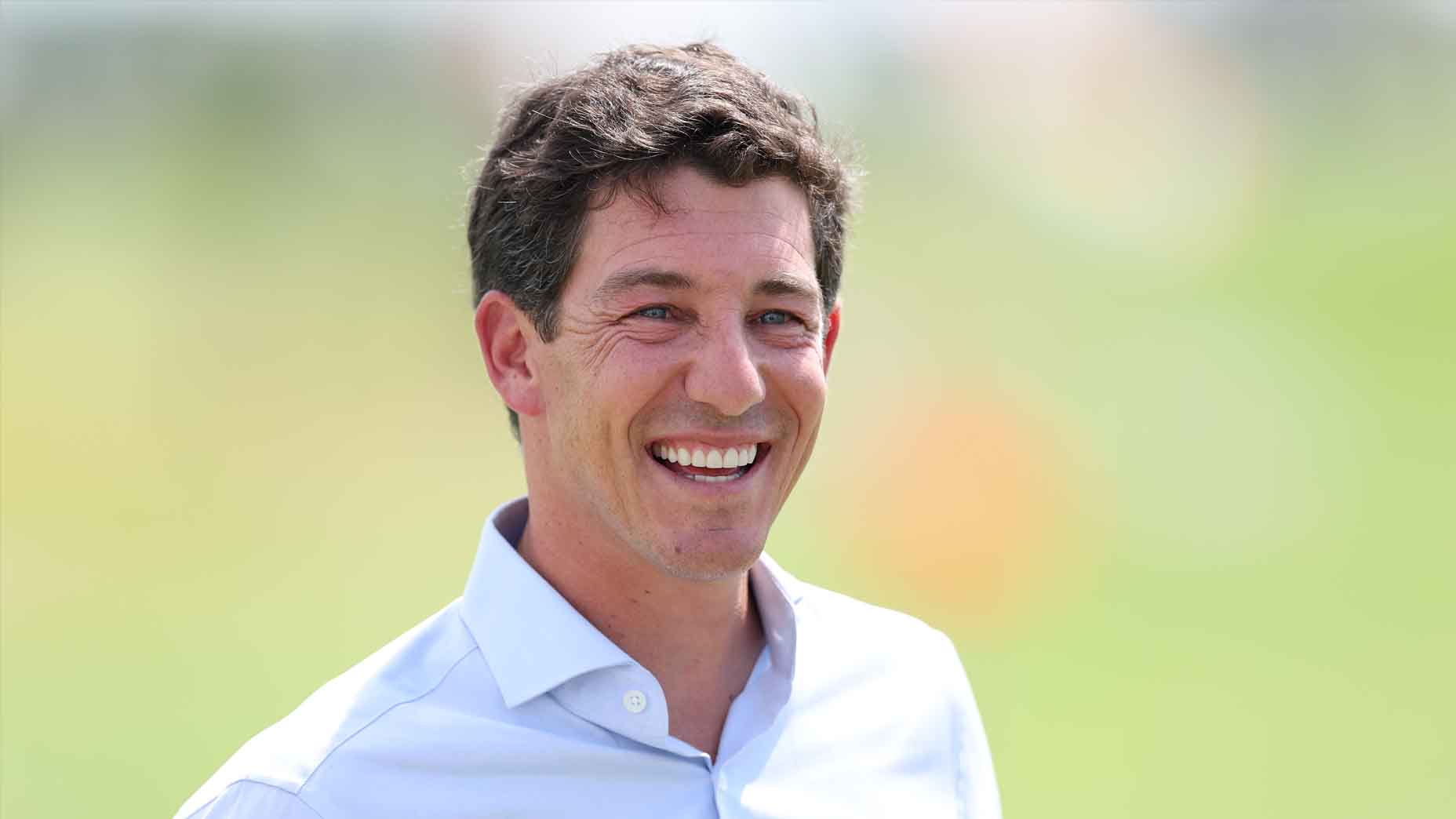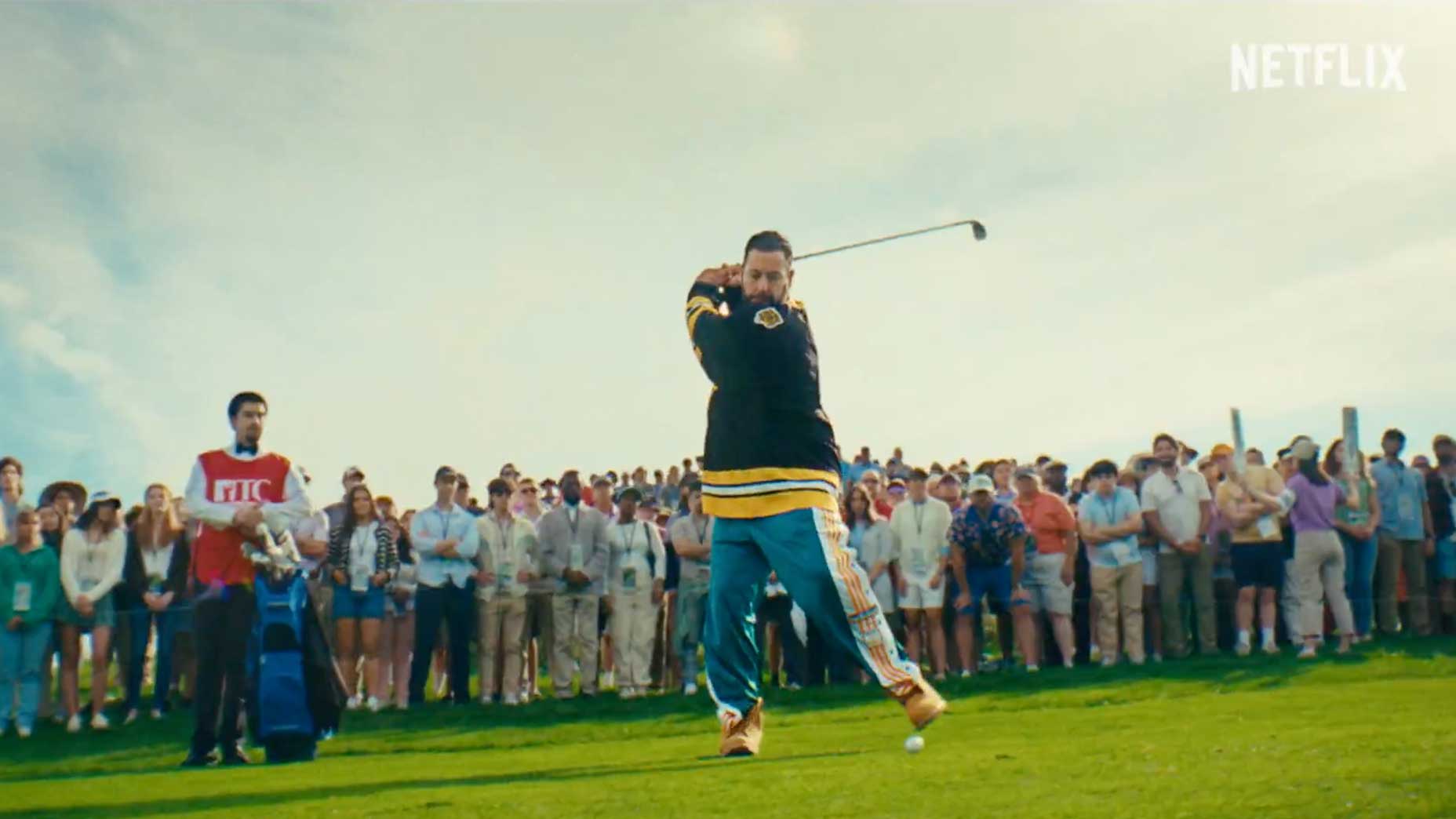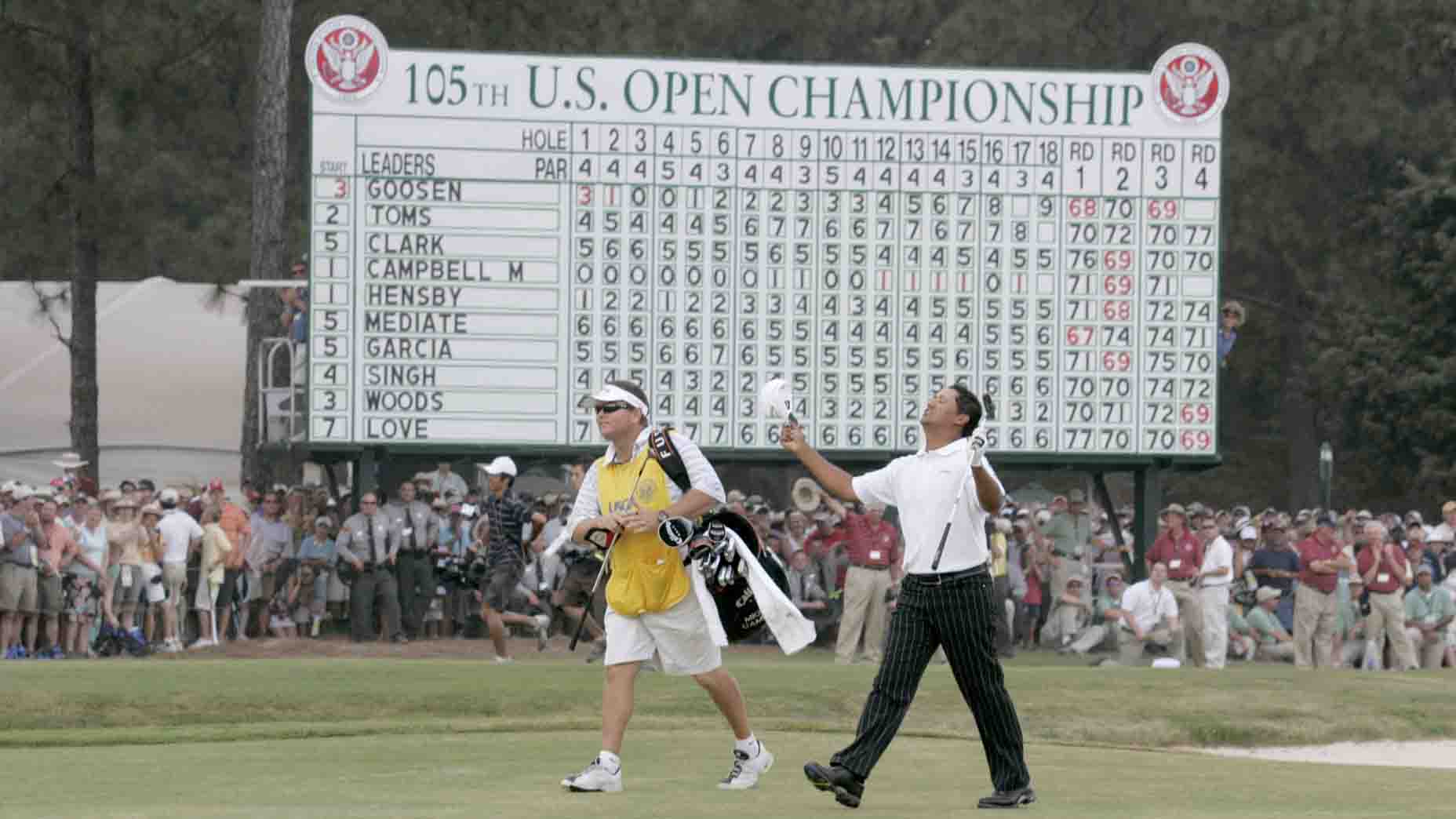Justin Thomas used a spectacular overall game to grab GOLF‘s Player of the Year honors, but even JT will admit that it’s his 117-mph swing that made the difference. Speed makes up for a lot of mistakes, and when you can control it like Thomas can, the birdies pile up fast (Thomas canned 354 last season, in addition to 14 eagles). Theories on speed creation abound, but thanks to modern technology, we’re in an age where I and other instructors can separate fact from fiction. Case in point: the Swing Catalyst Motion Plate, which can measure how golfers pressure the ground with their feet during every segment of the swing. Research with this device shows that the longest hitters on Tour — Thomas included — maximize ground force at key moments, using a combination of horizontal force (think weight shift), rotational force (your body torquing against the ground as you turn) and vertical force (a push against the ground prior to impact that make pros appear to launch upward prior to impact) that best suits their motion, body type and style. The example here is fairly typical of an elite player — it shows a blend of horizontal force at the beginning of the downswing, followed by a spike in rotational force, which fuels a boost in launch.
Odds are you won’t be able to match the launch numbers of elite, long-bombers, but you don’t need to. You can still drive it like them by focusing more on footwork and the way you leverage the ground to produce speed. Thomas built a POTY campaign from the ground up. Here’s how to do likewise.
Build a Base
To produce speed with footwork, your setup needs to be stable enough to handle all that shifting, turning and launching. Even as you settle in for the shot, it should feel as though you’re already “pressuring” the ground with your feet, what guys like JT refer to as “feeling athletic” at address. Follow the steps below (you can perform them at the range or at home, so no excuses). Not only will this drill improve your footwork, it’ll make it easier for you to maintain your posture and spine angle when you swing. 
Twist and Push
The next step is to isolate your lower body so you can properly feel an athletic pressure shift. Start by placing your hands on your waist while standing in your golf posture. Make a mock backswing by twisting your body and driving off the ground with your left foot. It should feel like your right leg is “supporting” your swing. Change directions by driving your right side against your left (again, doing it from the ground up). Finish by completing your turn and “posting up” over your left leg. Now you’re pro. 
Hit the Gas Pedal
Perform the previous drill several times. Once you start getting a feel for pressuring the ground, see if you can transfer it to actual swings. Start out at slow speed and with a basic waist-high-to-waist-high motion. After a while, begin twisting faster and pushing off the ground harder, which will automatically produce longer and faster swings (proof that all swings are built from the ground up). How hard should you twist and push against the ground? It depends on how far you want to hit the ball! For Thomas-like distance you’ll need to drive more than 2.5 times your body mass into the ground in vertical force prior to impact, producing the athletic “jump” you see JT make when he rips one off the tee. 
Add Pressure
The vertical force required to redline your swing speed results from transitioning athletically while building pressure under your front foot. To get a feel for this, place a ball under your left foot and set up as in the first drill. Sense the ball under your spikes as you start back, and as you transition from backswing to downswing, drive it as deep into the turf as you can. I ask my students to think of the ball as the gas pedal in a sports car, and to floor it as they deliver the club to the back of the ball. This is non-negotiable, not only for speed but also for catching shots square. And it doesn’t happen only on tee shots—vertical force is required on all swings. Even when hitting a short iron or a soft pitch, you can bet JT is pushing and twisting, but less than he does off the tee.





